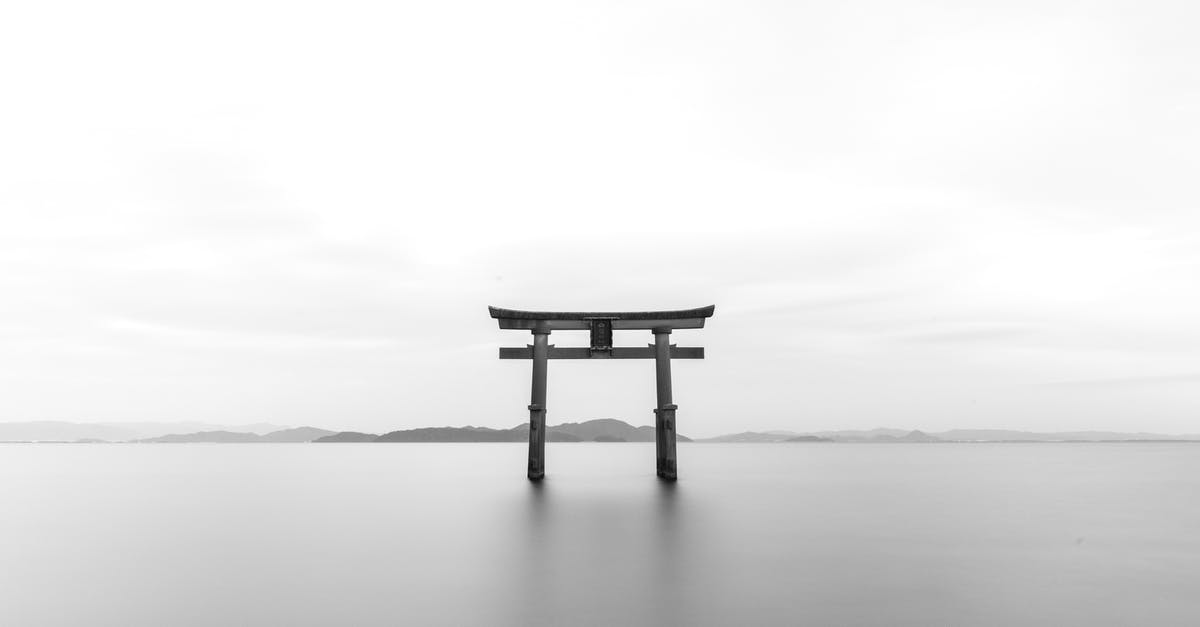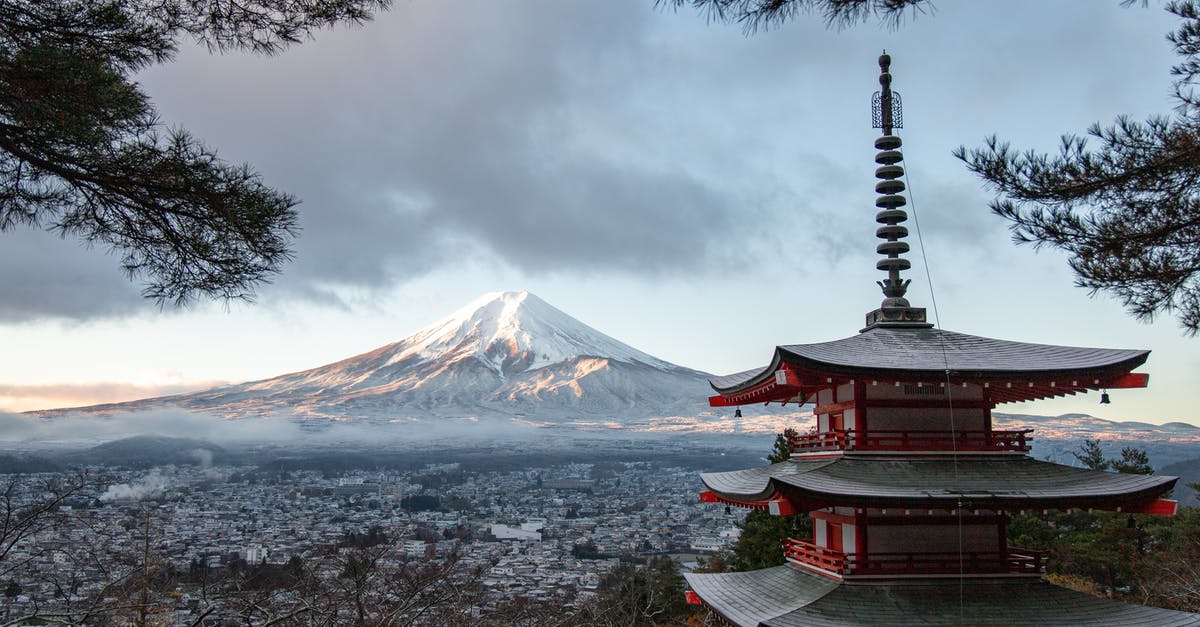Japan's crumbling temples and shrines -- How can I find them?

I will be staying in Japan for a few weeks late this summer, and would like to find a bunch of back-woods, off-the-beaten-path temples and shrines, especially if they are dilapidated and not "new" looking.
On my last trip to Japan I made some photo essays on night-life and modern culture, but I want to see the other, older side of Japan this time.
Any and all recommendation are very much appreciated!!
Best Answer
Great answer by jpatokal. One more thing to add to the kaimy? topic is that Japanese temples are run by private people as a business under something you could call a "religion business license" which is 100% tax-free. These businesses however do not only operate religious services such as funerals but also a lot of other non-religious operations such as golf courses and even love-hotels. As an effect people running temples in populated areas are very rich. So as long as there are people, they have enough money to renovate the temples.
On top of that, the renovation costs are relatively low since temples in Japan are mostly made out of wood and much smaller than a European church. So on top of them being (relatively) easy to renovate, they do not remain visible for a long time after being abandoned.
An exception would be if you are running a really old temple with antique rooms and artwork, some of the items in the temple can be VERY expensive to renovate. The replacements of special types of wood, renovating old 60-meter high statues and other items can quickly rack up a multi-million dollar bill for a few square meters - if the temple has the wish to stay as grand as in the old days.
However, these old temples have a quite high amount of visitors therefore receive a high amount of money. If you go to any temple, most of the items you can interact with are charging money to do so. There are parks to visit, donated sake barrels, lucky draws, boxes t throw coins in, papers and wooden plates to write wishes on and sometimes papers that are stuck on the windows of stone lanterns. All collect money and are used in large quantities by tourists and local residents alike.
Just to give a better example how seemingly mundane things can cost a fortune in Japan, I recently visited a very old (non-religious) building in Nara, where I was informed that the replacement of the main wooden structures in tea-room alone (only 9sqm large) would cost more than 2 Million USD to replace, specially because of the "tokobashira" beam and other wooden structures being so expensive.
Pictures about "Japan's crumbling temples and shrines -- How can I find them?"



Are there abandoned shrines in Japan?
Hatsumode, the first temple or shrine visit of the year, has become a tradition on Abandoned Kansai \u2013 and this year's hatsumode is especially special! Abandoned temples and shrines are quite hard to find in Japan, despite the fact that there must be tens of thousands of them.Where are Japanese shrines located?
The most common meish\u014d is the location where the shrine stands, as for example in the case of Ise Jing\u016b, the most sacred of shrines, which is located in the city of Ise, Mie prefecture. Very often the meish\u014d will be the name of the kami enshrined. An Inari Shrine for example is a shrine dedicated to kami Inari.Can you visit Shinto shrines?
How to Visit a Shinto Shrine in Japan. The act of visiting a shrine is called sanpai in Japanese. In Japan, be it the city or the countryside, you will find various Shinto shrines of all sizes. Needless to say, anybody can enter the shrine grounds and pay their respects, regardless of the religious belief they may hold ...What is the difference between shrines and temples in Japan?
In the simplest terms, temples are Buddhist, while shrines are Shinto. Temples have a large incense burner and many Buddhist statues, and may or may not have a graveyard attached to them, while shrines have a large, often vermilion red, torii, or sacred gate, standing in front of them.Japan - Quiet Life
More answers regarding japan's crumbling temples and shrines -- How can I find them?
Answer 2
When I went to Japan I wanted to hunt for some abandoned places as well, even though I was mostly interested in modern-looking places like Nara Dreamland.
Anyway, my starting point was Jordy Meow's site. He is a French photographer based in Tokyo specializing in urban exploration.
Temple of Lies* is just an example. Beware that he doesn't give any information about where the place actually is so you have to figure it out yourself using Google (and Google images, possibly).
I also did a small section of the Kumano Kodo pilgrimage route, from Kii Tanabe to Kii Katsuura. This is a spectacular trip on a somewhat forgotten part of Japan. Since it was a pilgrimage route you will stumble upon many temples and shrines along the way in a variety of different conditions. My suggestions is to start from Kii Tanabe and head to the tourist information office. If nothing changed in the last year you'll find a old woman who can just speak a few words of English. Don't give up! In fact in the city there's a pretty amazing Canadian guy named Brad Towle who works there promoting the tourism in the whole Kii peninsula and he knows everything of the area. Ask the lady where his office is and he will be more than glad to help you in any possible way. He got detailed maps of the whole area and he can help you planning your hunting for temples.
* The domain doesn't match with the one I previously pointed to because it's his old site.
Answer 3
This is an old question but there is a lot of conflicting information above, and much it conflicts with my personal experience living on Ikoma Mountain in 2000-2001 (at the time of this writing I live in Okinawa, and the situation isn't entirely different). I lived in front of a large shrine called ???? in Eastern Osaka. (Oh! it has its own website now! (O.o) Times change...)
The shrine road through Ishikiri is the old-shop district for the mountain. It follows the track of a very old footpath which runs from the front of the shrine, up through the neighborhood above until the houses end, continues to ascend through a forest passing several active and inactive shrines, up over the mountain (which at the peak had an amusement park nobody went to -- I wasn't ever sure if it was in business or closed down), down into Ikoma City on the other side, following a very old Ryokan road as it descended. Along the way you see numerous temples, markers to things that are still present but no longer have paths, stone lanterns that no longer mark anything, statues, graves, disused, overgrown paths to other interesting and unmarked things, etc. Its pretty amazing if you actually take the time to go exploring.
Walking through this area makes it clear that the mountains and forests of Japan hold quite a few hidden secrets. I've followed a few of the overgrown paths on Ikoma and discovered some pretty interesting things:
- Huge ancient carved rocks where the letters have stretched out in the rock due to water erosion. (I found one where the letters have eroded two directions, meaning its been turned at some point between being carved and now. I always wondered what the story behind that little effort must have been -- the stone must weigh >10t and sits on a pretty rugged slope in a rather remote part of the forest.)
- Little statuettes lining the unused road that have almost succumbed to moss erosion -- one of which was being actively cared for by someone who had dressed it and periodically cleaned around it and its little partner. (Why? Who? How is this one special? They all look the same...)
- Obvious intersections that lead who knows where
- Graves or monuments of once-famous people.
- Etc.
Researching these things is pretty much impossible without just stomping around in the woods. I would never have known these things existed just outside my neighborhood were I not the type to take long walks through through the forest. The girls at one of the shrines in the woods were able to tell me about some of the things around there, including a really wild local legend about some super rich lady who died with her house girls and buried a golden elephant at some secret place in the woods. Who knows if the legend is true -- its probably just some wild exaggeration across the generations -- but finding a genuine local legend of that sort was itself quite an interesting discovery to me (and a personal triumph of my then-not-so-good Japanese).
Here is a map link to the area (quite a few things seem to be missing, but you can tell its pretty dense even just with active-but-unvisited holy places). The mountains around Nara are loaded with similarly neglected pathways.
Due to the nature of the OP's request there really isn't a way to find these things other than to go look for them.
[As another bizarre side-note to add to the stack of bizarre side-notes that comprise this answer, the Yamaguchi-gumi have a head office there on the ryokan road that descends into Ikoma City. That was quite a surprise. The whole area is so weird, though, that it doesn't stick out as specially weird. Ikoma Mountain is by no means unique in Japan as a place positively overflowing with ancient and modern clashes, and surprises awaiting the observant traveller of the active and forgotten variety from either ancient or modern eras.]
Answer 4
You might interested in Kawaradera Temple Ruins in Nara.
Answer 5
It might be interesting to check Pilgrimage places in Shikoku, which is one of the four big islands in Japan and the smallest. This place is famous for pilgrimage. There are 88 temples associated with the famous Buddist monk called "Kobo Daishi." There are also lots of small temples and beautiful nature. Some of them are in the mountains.To complete the journey it is said to take more than one month because people usually get around on foot, wearing a white robe. I've never been there, but people who went there all said that it was great. I don't know if this helps you or not, but there are lots of videos on you tube and articles. Please type " Shikoku Pilgrimage" and check them if you're interested.
Sources: Stack Exchange - This article follows the attribution requirements of Stack Exchange and is licensed under CC BY-SA 3.0.
Images: Pixabay, Belle Co, Tomáš Malík, Vincent M.A. Janssen
